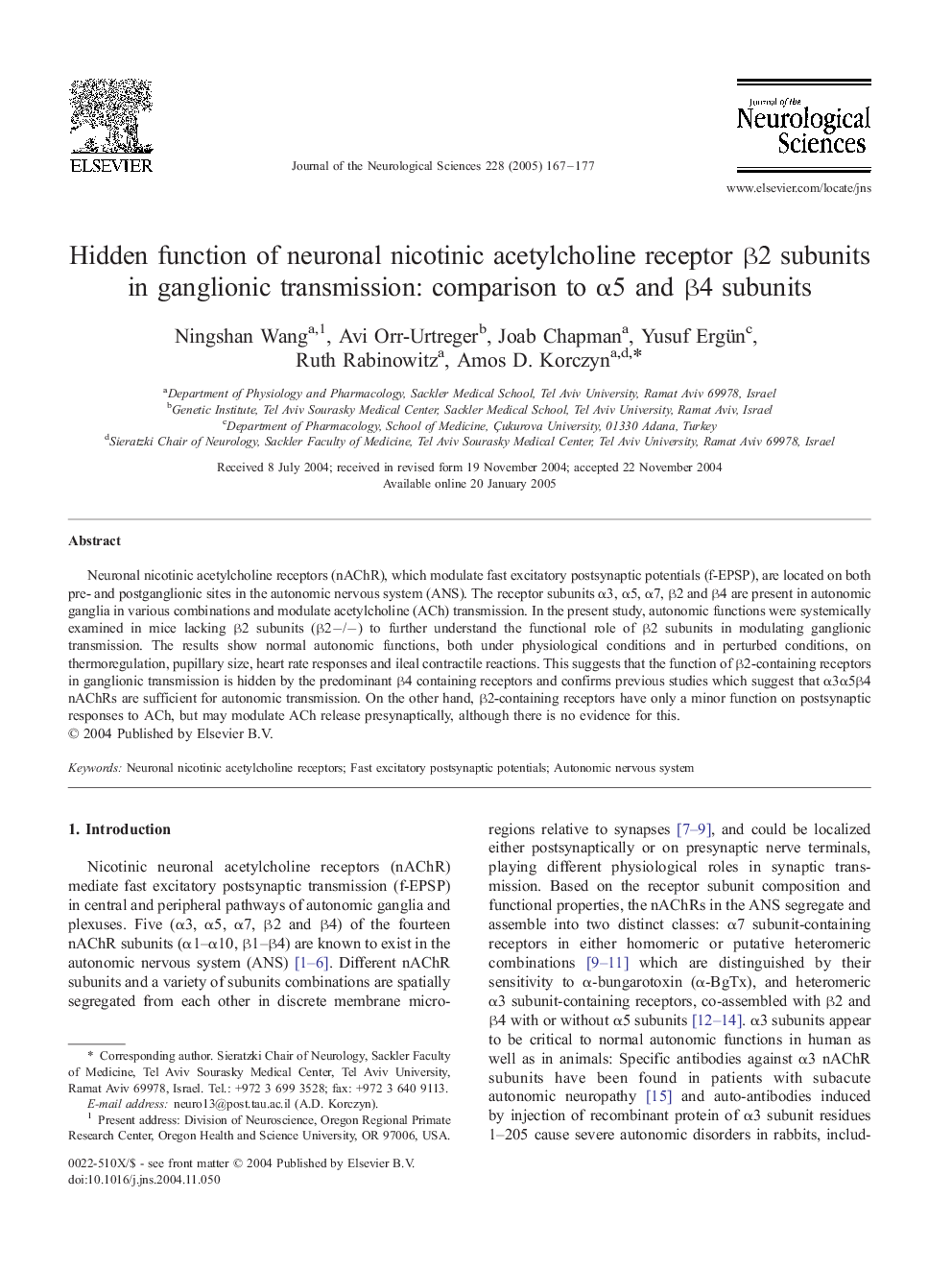| Article ID | Journal | Published Year | Pages | File Type |
|---|---|---|---|---|
| 10742538 | Journal of the Neurological Sciences | 2005 | 11 Pages |
Abstract
Neuronal nicotinic acetylcholine receptors (nAChR), which modulate fast excitatory postsynaptic potentials (f-EPSP), are located on both pre- and postganglionic sites in the autonomic nervous system (ANS). The receptor subunits α3, α5, α7, β2 and β4 are present in autonomic ganglia in various combinations and modulate acetylcholine (ACh) transmission. In the present study, autonomic functions were systemically examined in mice lacking β2 subunits (β2â/â) to further understand the functional role of β2 subunits in modulating ganglionic transmission. The results show normal autonomic functions, both under physiological conditions and in perturbed conditions, on thermoregulation, pupillary size, heart rate responses and ileal contractile reactions. This suggests that the function of β2-containing receptors in ganglionic transmission is hidden by the predominant β4 containing receptors and confirms previous studies which suggest that α3α5β4 nAChRs are sufficient for autonomic transmission. On the other hand, β2-containing receptors have only a minor function on postsynaptic responses to ACh, but may modulate ACh release presynaptically, although there is no evidence for this.
Related Topics
Life Sciences
Biochemistry, Genetics and Molecular Biology
Ageing
Authors
Ningshan Wang, Avi Orr-Urtreger, Joab Chapman, Yusuf Ergün, Ruth Rabinowitz, Amos D. Korczyn,
